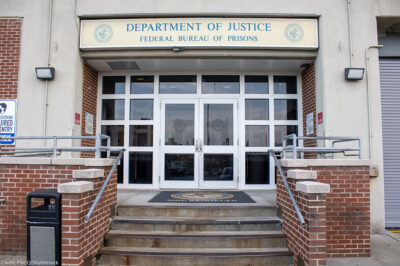
This piece originally appeared on The Washington Examiner.
Our criminal justice system is broken. Lives, families and communities are laid to waste while over two million Americans languish in prison. Local, state and federal corrections budgets are ballooning, and we are no safer in return. Fifty years after President Lyndon Johnson declared war on crime, we have established beyond a shadow of a doubt that we cannot arrest our way to peace and prosperity. We’re ready for new ideas about criminal justice reform, and ownership of positive change is up for grabs.
We are in the midst of a nationwide, bipartisan exploration of options for reworking our criminal justice system. Last November, California voters passed Proposition 47, which ended felony sentences for low-level crimes like drug possession, continued breaking down barriers to re-entry for people leaving prison and shifted more than $1 billion in projected savings from state corrections budgets to mental health and substance abuse treatment, victim services and K-12 programs for at-risk youth.
But blue-leaning states like California don’t have a monopoly on meaningful justice reform. This spring, Utah governor Gary Herbert signed into law a bill that reduced drug possession to a misdemeanor, improved drug treatment programs and dedicated the cost savings to better community-based programs and supervision. The bill passed Utah’s legislature with only three dissenting votes. It’s clear all sides are more than ready to hit the reset button on our incarceration levels, and the field is wide open to champions of any political stripe.
The fiscal arguments are settled: Our current levels of criminal justice spending are unsustainable and indefensible. Adjusted for inflation, local, state and federal spending on corrections increased roughly 400 percent from 1980 to 2010 while costs per prisoner stayed constant, meaning the increase in spending was driven almost entirely by the increase in numbers of people stacking up behind bars. Our spending on corrections has outpaced our investments in both transportation and education.
Today it costs taxpayers between $31,000 and $37,000 a year to house and provide services for a prisoner. Yet the criminal justice system continues to churn out people who aren’t equipped for life outside — all too often they reoffend and return to prison.
Americans are tired of throwing good money after bad. They want a system that addresses the root causes of crime, and they’ve learned that stuffing hundreds of thousands of people behind bars to serve long sentences delivers neither cost-effective crime prevention nor safety. They’ve learned that incarceration has an abysmal performance record: Two-thirds of state prisoners will be rearrested within three years of their release.
Recent polling commissioned by the bipartisan U.S. Justice Action Network, which includes both the ACLU and Americans for Tax Reform among its members, found that 85 percent of Ohioans agree that, “It does not matter whether an offender is in prison for months or years. What really matters is that the criminal justice system does a better job of making sure that when an offender does get out, they are less likely to commit another crime.”
An ACLU-commissioned nationwide poll found that voters believe by a two-to-one margin that reducing the prison population will make communities safer by facilitating investments in crime prevention and rehabilitation strategies.
Justice reform presents a huge opportunity for conservatives to demonstrate that investing in the future beats propping up the status quo every time. The challenge issued to conservative leaders is how to finance upfront investment in effective crime prevention and rehabilitation strategies at a scale that will allow reduction in incarceration numbers to levels that will produce real savings, which can then be invested back into maintenance and expansion of those strategies.
In other words, after decades of writing blank checks with taxpayer dollars to bloat and break our current system, where do we find the seed money to launch the more promising strategies of the future? Americans are looking for leaders with answers to that question, and conservatives could be the ones to deliver.


